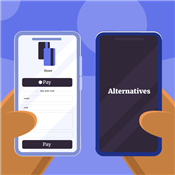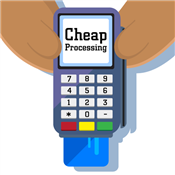Stripe Closed My Account
If Stripe closed your account, it's likely because of excessive chargebacks or a breach of Stripe's terms. Here's what you can do about it.
 |
- Why did Stripe close my account?
- Steps to take if your Stripe account has been closed
- What happens when Stripe closes your account?
- What does Stripe consider high-risk?
- What happens if Stripe blacklists you?
- Is Stripe safe and secure for your business?
- Customer Experiences
- Tips and tricks to avoid Stripe closure
- Alternative Payment Solutions
Although it's quite easy to open an account with Stripe, one major drawback is they can also close your account at any time, for any and no reason.[1] This is specifically stated in Stripe's Agreement.
What's worse, this could mean frozen funds and trouble with cash flow on your end. And this is a typical scenario for many small businesses with Stripe.
Stripe will email you the specific reason why your account was closed. But here are the potential reasons.
Why Did Stripe Close My Account?
The most basic reason would be non-compliance with Stripe's terms.
Often, Stripe will also shut down accounts of high-risk businesses (and business owners might not even be aware that their business is considered high-risk).
Read on for the breakdown.
Non-compliance with Stripe Guidelines
If you find your account terminated, it's likely because of a breach in the Agreement. Stripe will notify you. But if you fail to correct the breach within 10 days, your account will be closed.
- Using Stripe services for personal or household purposes (Stripe can only be used for your business)
- Reverse engineering Stripe Technology
- Attempting to or performing any action that disrupts the normal operations of Stripe
- Copying, reproducing, or distributing parts of the Stripe services, documentation, or the Stripe Website
If not terminated, your account may get suspended instead. Reasons for suspension include violating any law, not updating the Stripe Technology, and if your services harm Stripe or other parties.
Stripe may communicate with you through:[2]
- Your Stripe Dashboard
- By sending you a text message or email
- Through physical mail or delivery service to your postal address
Even though Stripe will inform you of problems with your account, you may learn about it after your funds have already been frozen or your account already suspended.
A lot of business owners report Stripe cutting means to communicate with them after trying many times to discuss and address the issue. Some of them got lawyers involved and have filed their cases.
Account Inactivity
If you have not used your Stripe account for 12 consecutive months, Stripe will consider the account inactive and automatically close it.
Inactive accounts increase the risks of fraud since lost or compromised cards won't be updated, and issues will likely go unresolved.
If Stripe deems the funds abandoned, they will forward the funds to the appropriate governmental authority. You may or may not get notified, depending on what the law requires.[2]
Excessive Chargebacks
Stripe doesn't work with high-risk businesses. One indicator of a high-risk business is a large number of chargebacks.
However, even without existing chargebacks, a high potential for these chargebacks is still considered.
Additionally, high chargebacks can get you on the MATCH list. This database is used by the credit card industry to track businesses with high levels of financial risk.
A chargeback is a returned payment after a customer successfully files a dispute for a credit or debit card transaction. Chargebacks typically occur due to fraud, technical issues, or duplicate charges by a merchant. Customers can dispute these transactions through their issuing bank.
High-volume Transactions
High-volume transactions can label your business as high-risk. Large-volume businesses typically receive large orders but have inconsistent revenues.
A large order can lead to a large one-time fee, which means credit card processors have a larger potential for loss.
Business owners have gotten their accounts in trouble for processing $5,000 ticket sizes to $100,000+ processing volumes in a matter of weeks.
In addition, customers also tend to have high (or unrealistic) expectations when it comes to big expenses. So if they end up unsatisfied with the order, you're more susceptible to chargebacks, which is a big no no for Stripe.
Your Business Is Not Supported by Stripe
Stripe doesn't support high-risk businesses and high-risk individuals. High-risk individuals include persons or entities "named to a restricted person or party." This may be in the U.S., U.K., European Union, or United Nations.
Stripe also doesn't support businesses in:[3]
- Cuba
- Iran
- North Korea
- Syria
- Crimea
- Donetsk
- Luhansk Regions
The service is also limited in Russia. You'll read more about supported and unsupported businesses a little later.
Misuse of Stripe Products
Misuse of Stripe products can also result in a closed account. This includes using the platform for illegal activities or engaging in fraudulent behavior.
Stripe has strict policies against money laundering, terrorist financing, and other forms of illicit transactions.
Stripe is also against false, manipulated, or misleading info about your personal identity, business identity, business nature, etc. So best to keep these info accurate and updated.
Additionally, you can't share cardholder information with another merchant to cross-sell products and services.
Stripe may freeze or shut down merchant accounts due to several reasons, including:
- Non-compliance with Stripe's terms and conditions
- Suspicion of fraudulent activity or high-risk behavior
- Excessive chargebacks or disputes from customers
- Violation of Stripe's prohibited businesses list
- Failure to provide requested documentation or information
- Breach of Stripe's Acceptable Use Policy
Merchants must adhere to Stripe's guidelines and policies to maintain a stable and secure account.
If Stripe closed your account and you believe it was an error, here's what you can do.
What to Do if Stripe Closed Your Account?
Stripe's customers have taken the following steps to resolve their account's closure:
- Contact Stripe support
Reach out to Stripe's customer support team to inquire about the reason for the account closure and potential solutions.You may be asked to submit bank documents or other documents for proof that the closure was a mistake.[4][5]
How would you rate Stripe's support during the closure process? - Review Stripe's terms and address compliance issues
Go through Stripe's terms and conditions to understand further any violations that led to the account closure.If the account closure was due to compliance issues, rectify those concerns immediately. For example, if you were accused of fraud, make sure your business details are accurate.
Review Stripe's Agreement Regularly
Stripe may update its terms at any time. So it's best to check regularly since Stripe may not notify you of these changes. According to Stripe, it's your responsibility to check for these changes. - Consider alternative payment processors
If Stripe does not support your type of business, consider Stripe alternatives instead.A high-risk business, for example, may do better with PaymentCloud, a high-risk payment processor. PaymentCloud has a higher buffer for chargebacks, which is up to less than 3% (the chargeback limit is typically 1%).[6]
High Risk? No Problem
- Competitive Options for Payment Processing at All Risk Levels
- Fast Funding
- No Setup/Hidden Fees
- No Minimum Credit Score
- All Industries Accepted
In reality, many business owners don't have a great experience regarding Stripe's customer support.[7]
Many of them claim that they've received the same email over and over, without further explaining the issue, in spite of them providing the needed additional documents.
If you have the budget, getting a lawyer involved may be a good idea. This is what some small business owners did and have filed cases against the giant payment processing company.
What Happens When Stripe Closes Your Account?
You'll likely need to find a new credit card processing company after Stripe closes your account. But there will be warning signs.
Before Stripe closes your account, your funds will get frozen, and you'll no longer be able to process payments.
The payouts may be paused for 120 days, although some business owners argue that their funds have been held for more than 180 days to even 2 years.
Stripe may take some of your funds as reserves (where only a portion of your funds will be held). Other small businesses unfortunately have had all of their funds frozen.
You can avoid this scenario entirely by going for merchant account providers rather than payment service providers (PSPs) like Stripe and Square. Merchant accounts are more stable and you'll likely get better customer support.
PaymentCloud is one of our highly recommended merchant account providers. They also work with high-risk businesses which means more chances of approval.
Can you reopen a closed Stripe account?
You might be able to reopen a closed Stripe account depending on the reason for closure. To do so, reach out to Stripe's customer support team. They can conduct another review of your account.
You need to fill out the form they will email you. It will redirect you to your Stripe Dashboard. Then, provide the necessary details.
However, if your account has been closed and placed on the MATCH list, Stripe can no longer reopen your account. This is due to their banking partner restrictions.
Unfortunately, payment processors usually cannot remove your account from the MATCH list even if you request it. You'll learn more about the MATCH list a little later.
It typically takes Stripe 3 to 5 business days to review documents submitted for account verification. But if you're trying to reopen a closed Stripe account, it may take weeks or even months of waiting for a response from Stripe's support team.
Can You Still Accept Payments After Stripe Closed Your Account?
You can no longer accept payments through Stripe if your account is closed. If this happens, it might be time to consider other credit card processing companies. Research the most suitable one based on your business type and needs.
If your Stripe account has been closed because your business is high-risk, it will help you understand exactly what that means.
What Does Stripe Consider High-risk?
A high-risk business is a business considered by credit card processors (including Stripe) to belong to risky industries. This could be due to a high potential for chargebacks, changing regulations, or a high sales volume.
In addition, there are businesses that require Stripe's approval to open an account. Read on for the details.
Stripe Prohibited Businesses
Stripe has a Prohibited Business list you can check out for the full list of industries it doesn't support.
Here are some of them:
- Businesses that infringe intellectual property rights, like distribution of music, selling of illegally imported and exported products, and unauthorized sale of designer products
- Unfair, predatory, and deceptive products like pyramid schemes and predatory lending
- Adult businesses like pornography, strip clubs, and online dating
- Certain legal services like bankruptcy attorneys
- Businesses selling cannabis products or cannabis dispensaries
To ensure that Stripe doesn't close your account, you should comply with the processor's terms of service and policies. This includes avoiding illegal activities, fraudulent behavior, and misuse of their products.
Restricted Businesses Where Stripe Approval Is Required
Contact Stripe for approval if your business belongs to one of the following industries:
- Regulated industries like CBD, tobacco, and financial products and services
- Businesses with higher financial risks, like travel and cryptocurrency businesses
- Businesses with business models that are prone to abuse, like multi-level marketing and shipping
Your business may get approved after additional review. You may be required to provide more documentation about your business.
That said, you may be better off with merchant account providers that actually specialize in these areas. You can start your hunt with the best high-risk merchant account providers.
High Risk? No Problem
- Competitive Options for Payment Processing at All Risk Levels
- Fast Funding
- No Setup/Hidden Fees
- No Minimum Credit Score
- All Industries Accepted
What Happens if Stripe Blacklists You?
Being blacklisted by Stripe can have serious consequences. It may affect your ability to accept online payments smoothly.
As a business owner, you must comply with Stripe's guidelines and operate within legal boundaries to prevent such a situation.
That said, you can submit a blacklist removal request to Stripe. Explain your situation and talk about your business in detail. However, this doesn't guarantee that your appeal will be approved.
Unfortunately, Stripe's blacklist isn't the only list you need to worry about. You'll want to avoid being listed on the MATCH list, too.
What Is the MATCH List?
The MATCH list, or the Mastercard Alert to Control High-Risk Merchants list, is the most commonly used Terminated Merchant File database, or TMF. TMFs are maintained by card networks like Visa and Mastercard.
These databases store information about accounts that have been closed by credit card processors worldwide. The reasons for closure include high chargebacks or violations of card brand regulations.
Payment processors consult these databases as part of the criteria for approving new businesses.
MATCH List Criteria:
You may be added to the MATCH list if you:[9]
- Have breached card network rules
- Engaged in fraudulent and illegal activities such as money laundering
- Failed to comply with PCI Data Security Standard Requirements
- A principal owner or partner of your business was convicted of criminal fraud
- Have excessive chargebacks (e.g., if chargebacks exceed 1% of your total Mastercard sales transactions in a single month or if your chargebacks totaled $5,000+)
- Have excessive fraud (if your fraud-to-sales dollar volume ratio is 8% or more in a month, and if there have been 10+ fraudulent transactions totaling $5,000+ in the same month)
There may be other criteria to consider. Thoroughly review all card network and payment processor terms and conditions.
As a merchant, you should take proactive steps to avoid being placed on this list. Stay compliant with all payment processing guidelines, maintain low chargeback ratios, and promptly address any disputes or issues related to transactions.
Since Stripe can close your account at any time, you may wonder if the processor is even safe to begin with. Here's the answer to that.
Is Stripe Safe and Secure for Your Business?
Stripe is a widely used payment processor used by large companies such as Amazon, Shopify, and even Google. This can be a good signal that the processing company is trustworthy.
That said, many small business owners are unsatisfied with Stripe as proven by the 2.2 out of 5 star Trustpilot reviews. Stripe's poor customer support can be troubling, especially if you find yourself with frozen funds and a closed account.
That said, your account may still be stable as long as you comply with Stripe's policies. Stripe takes measures to protect against fraudulent transactions. But remember, no payment processor can guarantee 100% protection against all risks.
- Point-to-point encryption
- Secure dashboard access
- Roles and permissions
- 3D Secure authentication
- Radar for Fraud Teams (machine learning and advanced fraud protection)
- Chargeback Protection (Stripe will cover the disputed amount and dispute fees)
Keep in mind that many business owners claim that their transactions "aren't fraudulent" and that they have actual customers and clients that made the purchase. And yet, they still found themselves with frozen funds.
Stripe will be best for new and low-risk businesses who wouldn't be processing large numbers of transactions and higher ticket sales.
Customer Experiences with Stripe's Services and Account Closure
Stripe doesn't have the best customer reviews. It has received a rating of 2.2/5 stars from Trustpilot from over 14,000 reviews.
Many of its clients even shared their awful experiences with the payment processor.
They told me that I don't meet [the] terms and conditions. And [that] after an additional audit, they can't support me as a company. [My business] is too high a risk for them.
I've passed these audits before, and I don't see it as a fair thing that my money is [now] stuck [with them]. It's 18k with 3 in reserve that was used to cover future disputes. I don't agree with this decision, and I'm willing to put a lawyer on it.
(From Trustpilot)
Stripe is the reason why my business is about to shut down. They are holding a lot of money from my business, saying that I charged customers without their consent—which is absolutely not true.
I have sent documents that prove that over and over and never received a response. A bot replies to me with the same reply as always…It has completely destroyed a business I spent 2 years building. I don't recommend using them at all. (From Trustpilot)
Stripe is 100% a fraudulent company. They will close your account, hold your funds forever, and then block your email contact so you can't message them. The responses to these reviews to contact them via email are just bots, and they will either ignore your email or send you some copy-and-paste script saying they can't help you.
I now have to get a lawyer involved just for them to communicate with me.
(From Trustpilot)
The reviews above show that Stripe may not always be the best payment processor depending on your business type. You may also find it difficult to get help from Stripe's customer service.
You can check out its alternatives instead.
Tips and Tricks to Avoid Stripe Closure
If you think that Stripe really has all the features your business needs, there are steps you could take to ensure that your account remains open.
- Ensure your business is not included in Stripe's Prohibited Businesses List
Right off the bat, you'll want to make sure that your business type is supported by Stripe.Included in this list are the Restricted Businesses, which may be seemingly unproblematic (i.e., businesses selling digital goods).
- Verify if you're a high-risk business
Not all high-risk businesses are illegal. Some online/retail businesses are also considered high-risk, like dropshipping, electronics, and furniture stores.Try contacting Stripe to inquire if they consider your business as low or high-risk.
- Keep your chargeback rate below 1%
Many payment processors consider businesses with 1% chargeback rate high-risk. You can try to keep this to a minimum by ensuring your customers are satisfied with the product/service.That said, you can also use features that will help fight fraud, since fraudulent transactions typically cause the chargebacks. Authentication features can greatly help you out.
- Keep your business details accurate and updated
Stripe will see inaccurate data as fraud. Make sure you update your account for any changes related to your business.Additionally, Stripe only supports businesses. So even if you're a one-man team, it's best to set up a real, legal business entity.
- Set prices yourself
Letting the customers set the price for a purchase or service can encourage fraudsters. This may be most applicable to websites for donations (which is a restricted business).Setting the price yourself can discourage fraudsters who use websites as testing platforms. They often see which of their stolen cards are still working by purchasing items on your site for $1.
- Set minimum purchase amounts
Minimum purchase requirements can help you avoid fraud for the same reason as setting the prices yourself. - Don't disregard Early Fraud Warnings
Issuing banks send these warnings if the card used is stolen. You can avoid the likely dispute (from the card thief) by issuing a refund. Therefore, lowering your chargeback rate.Unfortunately, this could mean a loss for your business if you've already shipped your product. Setting up authentication will help prevent this scenario.
Alternative Payment Solutions to Stripe
Whether you're a small, high-volume, or high-risk business, there's a suitable Stripe alternative that can cater to your needs.
Square: for small and seasonal businesses
Square is one of the best credit card processors for small businesses. Just like Stripe, you can set up an account without needing an underwriting process.
Square offers a free account with flat-rate pricing. You only pay when you make a sale. Plus, you can get a free card reader to help you start accepting card payments.
Your contract will be month-to-month, so you don't need to worry about cancellation fees.
 |  | |
| Visit Site | Visit Site | |
Square | Stripe | |
|---|---|---|
| Pricing Model | Flat rate (also offers customized pricing packages) | |
| Monthly Fee | ||
| Swipe Rate | ||
| Online Rate | ||
| Keyed-in Transaction Fee | ||
| Accept International Payments | ||
| Equipment | Card reader: $0 to $59; Stand, Terminal, and Register available for purchase | Online Processing, Terminal, Stripe for Marketplace & Platforms, Billing Services (subscription & invoicing) |
| Invoice Management | ||
| Recurring Billing | ||
| Fraud Prevention Tools | ||
| Customer Service | Phone, Email, Live Chat Support, Seller Community | Phone (by request), Email, Live Chat, IRC |
| Visit Site | Visit Site |
Square Reader: Free Mobile Credit Card Reader
- Pay 2.6% + 10¢ Per Swipe for Visa, Mastercard, Discover, and American Express
- Accept Credit Cards Anywhere
- Fast Setup, No Commitments
Helcim: for high-volume businesses
Helcim is another great credit card processor that's suitable as an alternative to Stripe. It offers interchange-plus pricing, which can be cheaper than Stripe's flat rate.
Additionally, the higher your sales volume, the cheaper your processing fees may be.
Note that Helcim is a merchant account provider. So, there will be an underwriting process to open an account.
 |  | |
| Visit Site | Visit Site | |
Helcim | Stripe | |
|---|---|---|
| Pricing Model | Flat rate (also offers customized pricing packages) | |
| Monthly Fee | ||
| Swipe Rate | Interchange rate + 0.40% + $0.08 (for processing up to $50,000/mo; discounts for larger volume) | |
| Online Rate | Interchange rate + 0.50% + $0.25 (for processing up to $50,000/month; discounts for larger volume) | |
| Keyed-in Transaction Fee | Interchange + 0.50% + 25¢ (for processing up to $50,000/mo; discounts for larger volume) | |
| Accept International Payments | Customers can purchase in CAD/USD (not their local currency) from any location | |
| Equipment | $99 for Helcim Card Reader; $329 for Helcim Smart Terminal | Online Processing, Terminal, Stripe for Marketplace & Platforms, Billing Services (subscription & invoicing) |
| Invoice Management | ||
| Recurring Billing | ||
| Fraud Prevention Tools | ||
| Customer Service | Phone, email, or schedule callback | Phone (by request), Email, Live Chat, IRC |
| Visit Site | Visit Site |
Start Accepting Payments Fast
- Interchange Plus Pricing
- No Monthly Fees
- No Contracts
PaymentCloud: for high-risk businesses
PaymentCloud is another merchant account provider that can be a Stripe alternative. It accepts low-risk to high-risk businesses, so you have fewer worries about being approved for an account.
Plus, PaymentCloud gets you a dedicated account manager, which can be convenient for your concerns. This can make it a more reliable option than simply working with a customer support team.
PaymentCloud offers customized pricing. So, you'll have to contact them for a quote. Just don't expect a month-to-month contract like Stripe if your business is high-risk.
 |  | |
| Visit Site | Visit Site | |
PaymentCloud | Stripe | |
|---|---|---|
| Pricing Model | Flat rate (also offers customized pricing packages) | |
| Equipment | Available through third-party providers (Clover, Dejavoo, etc.) | Online Processing, Terminal, Stripe for Marketplace & Platforms, Billing Services (subscription & invoicing) |
| Invoice Management | ||
| Recurring Billing | ||
| Fraud Prevention Tools | ||
| Customer Service | Phone (by request), Email, Live Chat, IRC | |
| Visit Site | Visit Site |
High Risk? No Problem
- Competitive Options for Payment Processing at All Risk Levels
- Fast Funding
- No Setup/Hidden Fees
- No Minimum Credit Score
- All Industries Accepted
Bottom Line
It can surprise you and halt your business operations if you find that your Stripe account has been closed. Unfortunately, this can happen anytime.
But the reason is usually due to a breach in your Agreement with Stripe or that your business is unsupported.
That said, you can always reach out to Stripe's support team if you think there has been a mistake. If there's no way of getting back your account, you can always consider Stripe's alternatives.
References
- ^ Stripe. Stripe Agreement, Retrieved 10/23/2024
- ^ Stripe. Stripe Services Agreement, Retrieved 01/19/2024
- ^ Stripe. High Risk Jurisdictions and Persons, Retrieved 02/21/2024
- ^ Trustpilot. Stripe, Retrieved 01/19/2024
- ^ Trustpilot. Stripe, Retrieved 01/19/2024
- ^ PaymentCloud. FAQ: What's an acceptable chargeback ratio?, Retrieved 02/21/2024
- ^ Trustpilot. Stripe, Retrieved 10/23/2024
- ^ Stripe. What is the verification status of my account?, Retrieved 04/24/2024
- ^ Mastercard Developers. MATCH, Retrieved 02/21/2024
Online Payment Processing
- Accept payments worldwide and automate payouts and financial workflows seamlessly
- Grow with confidence: Whether you're running an e-commerce store, subscription service, or marketplace, Stripe adapts to any business model
- Trusted by millions: From startups to Fortune 500 companies, Stripe powers businesses of every size
- Predictable costs: Transparent flat-rate pricing with no setup fees or monthly charges – pay only for what you use
- Enable more sales: Support credit cards, mobile wallets, and 135+ international payment methods
- Developer-friendly tools: Integrate payments quickly with Stripe's intuitive APIs and documentation
Square Reader: Free Mobile Credit Card Reader
- Pay 2.6% + 10¢ Per Swipe for Visa, Mastercard, Discover, and American Express
- Accept Credit Cards Anywhere
- Fast Setup, No Commitments
Save Up to 40%
- Flat Monthly Subscription Price, Starting at $99
- 0% Markup on Direct-Cost Interchange
- 24/7 Support
Write to Karen Eloriaga at feedback@creditdonkey.com. Follow us on Twitter and Facebook for our latest posts.
Note: This website is made possible through financial relationships with some of the products and services mentioned on this site. We may receive compensation if you shop through links in our content. You do not have to use our links, but you help support CreditDonkey if you do.
|
|
| ||||||
|
|
|
Compare:










